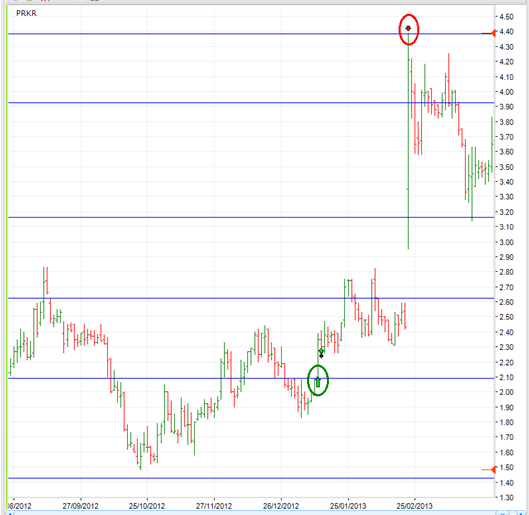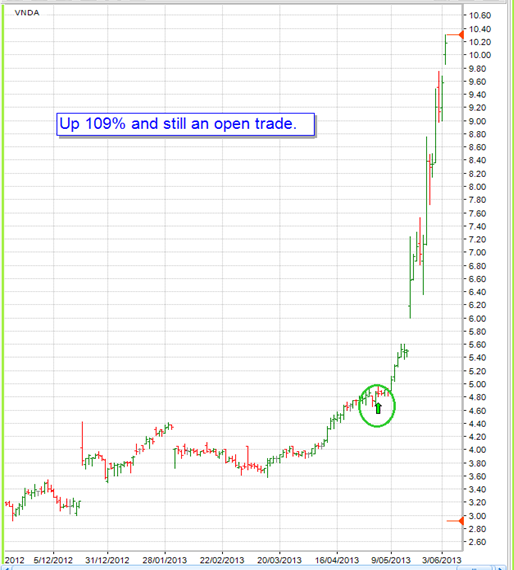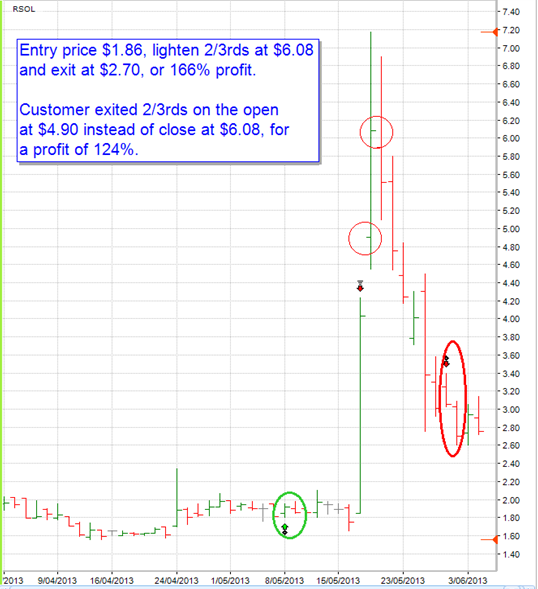In response to Julia’s comment on last week’s Journal posting I thought that I’d clear up what we do and explain that, whilst important, “stock analysis”, as Julia calls it, can be a very small part of being successful in the market.
Julia asked: “Whatever happened to your stock analysis business? Have you retired?
Firstly, sometimes my Journal postings may seem like they are off-topic with some of the content that I cover but I can assure that they are not. They are all very relevant. In one-on-one mentoring that I have done with active investors, oftentimes the area that they most battle with is preparing their Mission Statement and their Goals and Objectives Statement. As in business, this area is far more important to succeed than most believe it to be. Another big area that challenges active investors is mindset.
In our business we do ASX “stock analysis” on a monthly basis in our Intelledgence product using fundamental analysis of company financial performance to produce a Fundamental List based mainly on Return on Equity, EPS growth and DPS growth over 4, 7 and 10 years. Intelledgence also does trend analysis, risk management and position sizing to enable a private investor to manage an ASX portfolio on their own accord.
In our SPA3 product we do trend analysis of stock prices using technical analysis, quantitative analysis, risk management, money management and portfolio management. SPA3 doesn’t do any “stock analysis”, as Julie calls it. However, the Intelledgence Fundamental List can be used for this purpose if used jointly with SPA3.
SPA3 has been researched on the ASX, JSE and NASDAQ. Whilst SPA3 ASX was first released in 1998, SPA3 JSE in 2004, SPA3 NASDAQ was finally released in January 2013 after much research and simulation of 100’s of 1000’s of portfolios. So for people such as yourself who live outside Australia and have an interest in trading the US equity markets we have a stock active investing solution for you.
I said that I would explain my statement: “Analysts analyse….”. The point that I make here is that, whilst stock or trend analysis is an important part of being successful in the markets, it is probably of the least importance when lined up alongside researching and determining your:
- risk management criteria
- position sizing calculation
- daily and weekly processes
- the details of your Trading Plan.
And then establishing and stepping into a process to keep on improving your mindset wrt trading and investing.
Once these are in place, together with an analysis process that contains the definitive criteria of when to buy and when to sell, the active investor can start executing, that is, start trading. It is at this point that analysis stops and trading starts.
The act of trading is executing buy and sell orders, nothing more nothing less.
Similarly the act of golfing is swinging the golf club to strike the ball. A golfer spends about 2 – 4 minutes a round swinging a club to strike the ball but he/she spends another 4 hours 25 minutes thinking, planning and preparing for and about the act of golfing. During this time it is easy to chop and change your swing, your putting stroke, your process etc etc.
The act of trading takes a few seconds too but all the ‘noise’ that surrounds the markets can consume the investor all their waking hours, if allowed to. There are almost a limitless number of variables that interact on the financial markets and each variable doesn’t necessary have the same effect on the markets every time that it did the previous time. This is why it is important that investors move to a point in their investing journey that they stop analysing and only invest, or trade, merely executing their trades according to their researched and documented criteria in their Trading Plan.
Investors with an analyst’s mindset continue to analyse, they can’t help themselves. They continuously examine criteria outside of their researched process and continuously talk themselves out of executing trades that they should execute, and into trades that they shouldn’t execute. They have an analyst’s mindset so they have to analyse, just like the “carpenter who sees everything in terms of a hammer and nails.”
Analysts analyse, trader’s trade. Similarly, investors invest. Which are you, an analyst or a trader/investor?
An example of trading instead of analysing is our SPA3 NASDAQ public portfolio which has been traded in a live trading account with a USA based brokerage since the first trade was placed on 14th January 2013, when a Low Market Risk signal was signaled on the NASDAQ.
Because all the analysing has been done and dusted during the research phase, we have merely executed the researched and now clearly documented Trading Plan without doing any “stock analysis”. Being half a world away in another country we wouldn’t know what the companies do that we trade in the portfolio.
Until 4th June the portfolio is up 22.9% compared to the NASDAQ Composite being up 10.2%. The best closed trade executed so far in the portfolio was a 73% profit and the worst a 29% loss. Here is the 73% profit trade:

Customers have reported executing trades in their NASDAQ portfolios such as these:





I have come to realize that the move from analyst to trader is a difficult one, and one that student traders should keep firmly on their radar screen. Not making the move from analyst to trader a definite and clear cut change of mindset will cause more loss and grief than all the other possible trading errors combined. I speak from experience. I love system research and development, it is exciting and interesting. On the other hand, trading is a boring process, full of reward, but absolutely no challenge. If you haven’t reached this stage, then you are still down in the valley with the mountain to climb towering over you, believe me. Successful trading is no hit or miss, it is guaranteed to be successful, you know it is successful, and the only challenge is to remain alert, aware, and awake, acting with diligence and discipline every moment you are in the market. An analogy is sowing corn. It is wonderful to harvest the corn crop, but first you have to plough the paddock, then sow the grain, which can be very boring unless you convince yourself of the importance of doing that work. Once you start the process, the planning and analysis is over, and the boring yet demanding work of planting the crop begins. The harvest is a just a matter of process.
A trader must see that the moment of trading is a clear and disciplined change of mindset, blocking out all traces of analysis, or else pay the price.
I have been ghost trading the Nasdac since January, taking no notice of what the company does or who it is, mainly because I have never heard of most of these companies, just as long as it fits within my buy and sell criteria. To date I am up 19.4% I only wish I had gone live from January.